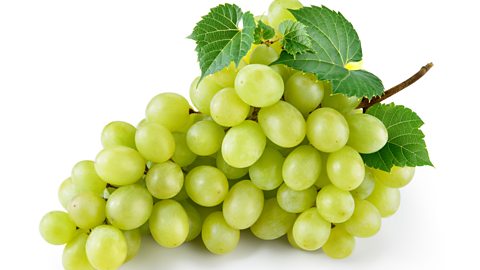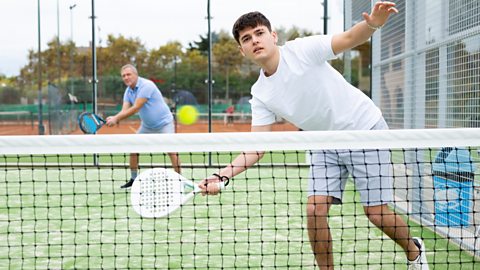Key points about comparative and superlative adjectives in Spanish

superlativeA word that describes the most of something, for example the biggest, the strongest, the fastest. comparative An adjective used to compare two things, eg better, taller, older. are used to compare two things and show that one thing is bigger, smaller, better, etc than the other.
superlativeA word that describes the most of something, for example the biggest, the strongest, the fastest. adjectives are used to compare things and say which one is the biggest, strongest, fastest, etc or the most or least.
Some comparative adjectives are irregularSomething that does not follow the usual or āregularā pattern. in Spanish. Some superlatives are also irregular, such as the best and the worst.
The absolute superlative is used when a noun cannot be beaten.
What are comparative adjectives?
Comparative adjectives are used to compare two things and to say that one thing is bigger, smaller, better, etc than the other.
For example:
Colombia es ³¾Ć”²õ grande que EspaƱa. - Colombia is bigger than Spain.
Paloma es menos trabajadora que MarĆa. - Paloma is less hard-working than Maria.
How to form comparative adjectives
Some examples of comparatives in English are: faster, slower, happier, and shorter.
To form the comparative meaning more than, use ³¾Ć”²õ followed by the adjective and que.
To form the comparative meaning less than, use menos followed by the adjective and que.

Remember
Donāt forget that the adjectives still have to agreeIn Spanish, an adjective must agree with the noun or nouns they are describing, which means that they have to show if they are masculine or feminine and singular or plural to match the noun..
For example:
Mi casa es ³¾Ć”²õ ±č±š±ē³Ü±šĆ±²¹ que tu piso. - My house is smaller than your flat.
The adjective ±č±š±ē³Ü±šĆ±²¹ agrees with casa.
Comparing similar things
Comparative adjectives describe how similar two things are.
For example:
La geografĆa es tan interesante como la historia. - Geography is as interesting as history.
To say how similar two things are, use tan followed by adjective and como.
What are superlative adjectives?
Superlatives are used to compare things and say which one is the biggest, strongest, fastest, etc or the most/least.
For example:
Mi casa es la ³¾Ć”²õ grande. - My house is the biggest.
Ana es la menos trabajadora. - Ana is the least hardworking.
How to form superlative adjectives
To form the superlative meaning the most, use el/la/los/las followed by ³¾Ć”²õ and the adjective.
To form the superlative meaning the least, use el/la/los/las followed by menos and the adjective.
El/la/los/las is the word for ātheā and changes according to whether the noun is masculine, feminine, singular or plural.
Irregular comparative and superlative adjectives
The following common adjectives have irregular comparative and superlative forms in Spanish:
good
bad
old
young
Irregular comparatives
The adjectives good, bad, old and young have the following irregular forms in the comparative.
| Adjective | Translation | Comparative adjective | Translation |
|---|---|---|---|
| bueno/a | good | mejor (que) | better (than) |
| malo/a | bad | peor (que) | worse (than) |
| viejo/a | old | mayor (que) | older (than) |
| joven | young | menor (que) | younger (than) |
For example:
Mi coche es mejor que tu bicicleta. - My car is better than your bike.
Mis amigos son mayores que yo. - My friends are older than me.

Remember
Do not use ³¾Ć”²õ or menos when using these four adjectives in the comparative.
Irregular superlatives
The adjectives good, bad, old and young have the following irregular forms in the superlative.
| Masculine singular | Feminine singular | Masculine plural | Feminine singular | Translation |
|---|---|---|---|---|
| el mejor | la mejor | los mejores | las mejores | the best |
| el peor | la peor | los peores | las peores | the worst |
| el mayor | la mayor | los mayores | las mayores | the oldest |
| el menor | la menor | los menores | las menores | the youngest |
For example:
Es el mejor resultado. - Itās the best result.
Es la peor asignatura. - Itās the worst subject.
Note that superlatives menor and mayor are placed after the noun.
For example:
Mi hermano menor es muy creativo.
Comparative and superlative adjectives - Mini quiz

Translate the missing part of this sentence using the correct comparative or superlative form.
Las vistas del hotel son las ____________.
The views in this hotel are the best.
Las vistas del hotel son las mejores.
Vistas is feminine plural so las mejores is the correct absolute superlative to use.
Absolute superlatives
Use the absolute superlative when something is so good or bad that it canāt be compared to anything.
For example:
Las pizzas son grandĆsimas. - The pizzas are really, really big.
The absolute superlative is formed by removing the final vowel - if there is one - from the adjective and adding the ending Ćsimo /Ćsima/Ćsimos/Ćsimas to make sure it agrees with the noun.
For example:
bueno ā ²ś³Ü±š²ŌĆ²õ¾±³¾“Ē (really, really good)
malo ā ³¾²¹±ōĆ²õ¾±³¾“Ē (really, really bad)
grande ā ²µ°ł²¹²Ō»åĆ²õ¾±³¾“Ē (really, really big)
Quiz - Comparative and superlative adjectives
Practise what you've learned about comparative and superlative adjectives with this quiz.
Now you have learned about comparative and superlative adjectives in Spanish why not explore quantifiers and intensifiers?
More on Adjectives and adverbs
Find out more by working through a topic
- count4 of 8

- count5 of 8

- count6 of 8

- count7 of 8
